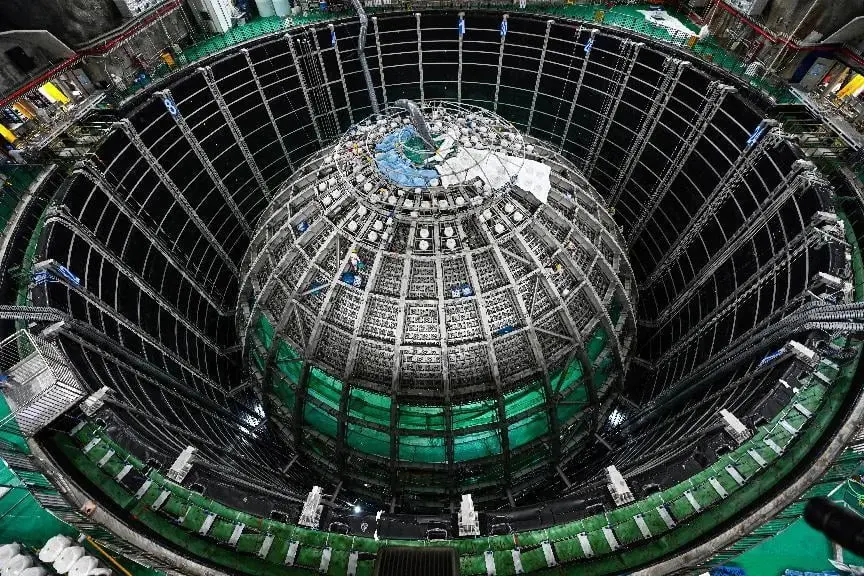The Jiangmen Underground Neutrino Observatory (JUNO) in China is approaching a significant achievement with the near completion of the world’s largest acrylic sphere. This enormous structure is essential for capturing and analyzing neutrinos, which are subatomic particles that provide insights into the universe's mysteries.
Construction Details
The acrylic sphere has been assembled from 263 large spherical panels, each 12 centimeters thick. It boasts an impressive diameter of 35.4 meters, far surpassing the previous record holder of 12 meters. The development and manufacturing of this colossal sphere have been undertaken by Donchamp (Jiangsu) Material Technology Co Ltd., located in Taizhou, Jiangsu province.
A dedicated team of 50 workers from Donchamp is in the final stages of the installation process, aiming to complete it by the end of July.
Location and Function
JUNO is situated 700 meters underground in Jiangmen, Guangdong province. This deep underground location provides shielding from background radiation, enabling more accurate neutrino detection.
Once operational, the observatory will use the acrylic sphere to hold 20,000 metric tons of liquid scintillator. This special liquid emits light when neutrinos strike it, allowing the observatory’s 45,000 photomultiplier tubes to detect and record these elusive particles.
Scientific Goals
By studying neutrinos, scientists aim to gain a deeper understanding of the universe's evolution, the nature of dark matter, and the mechanisms that drive exploding stars, known as supernovas. With the completion of this giant acrylic sphere, JUNO is set to become a leading facility in the field of neutrino research.


Leave a Reply